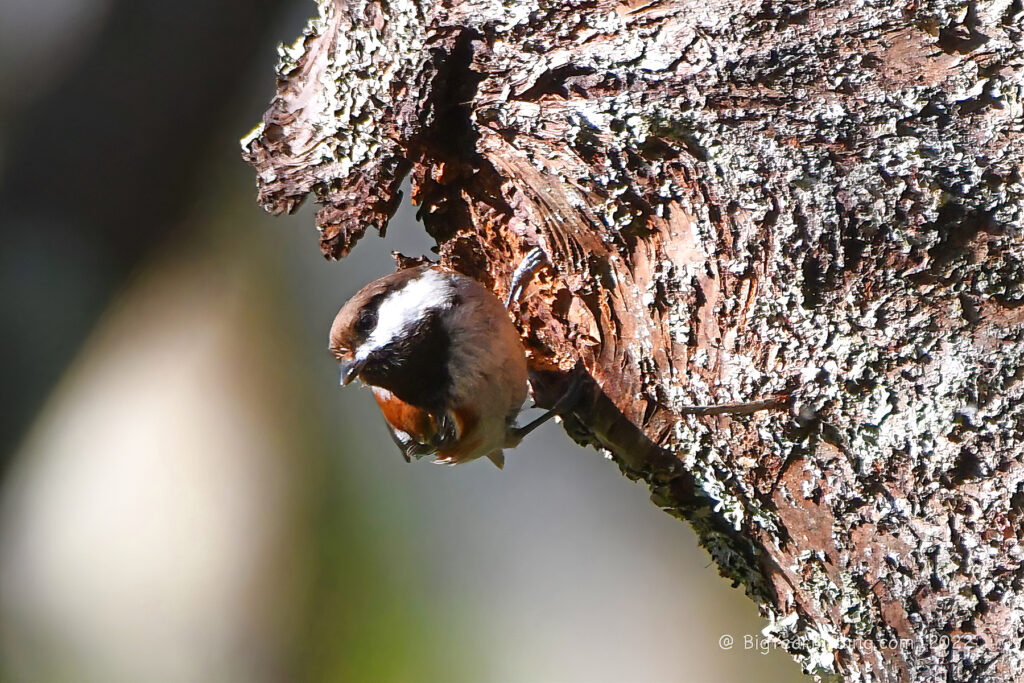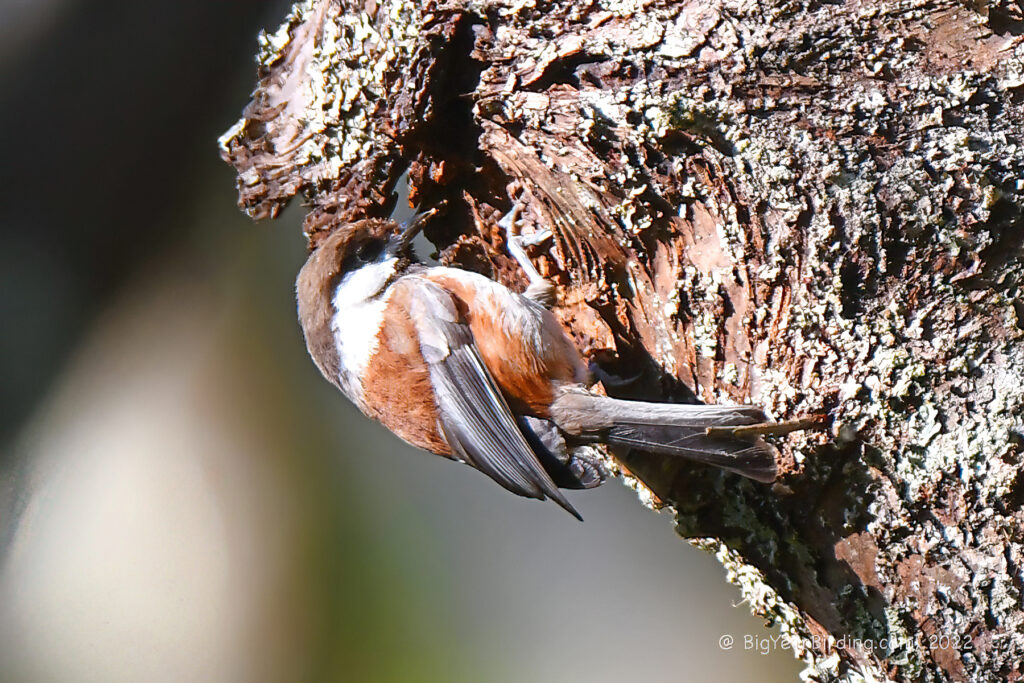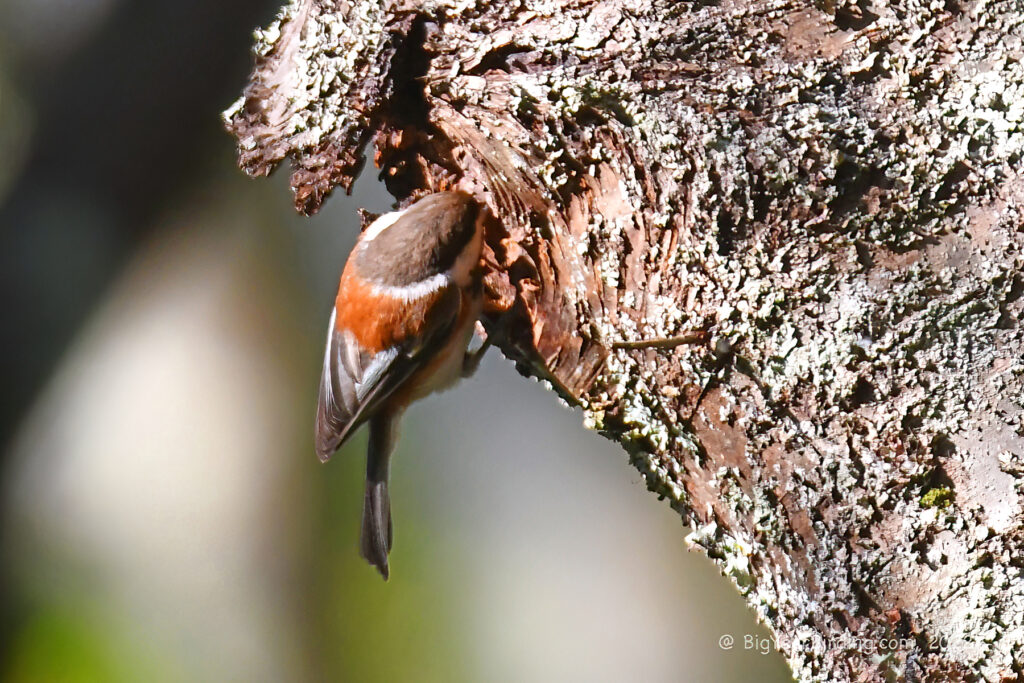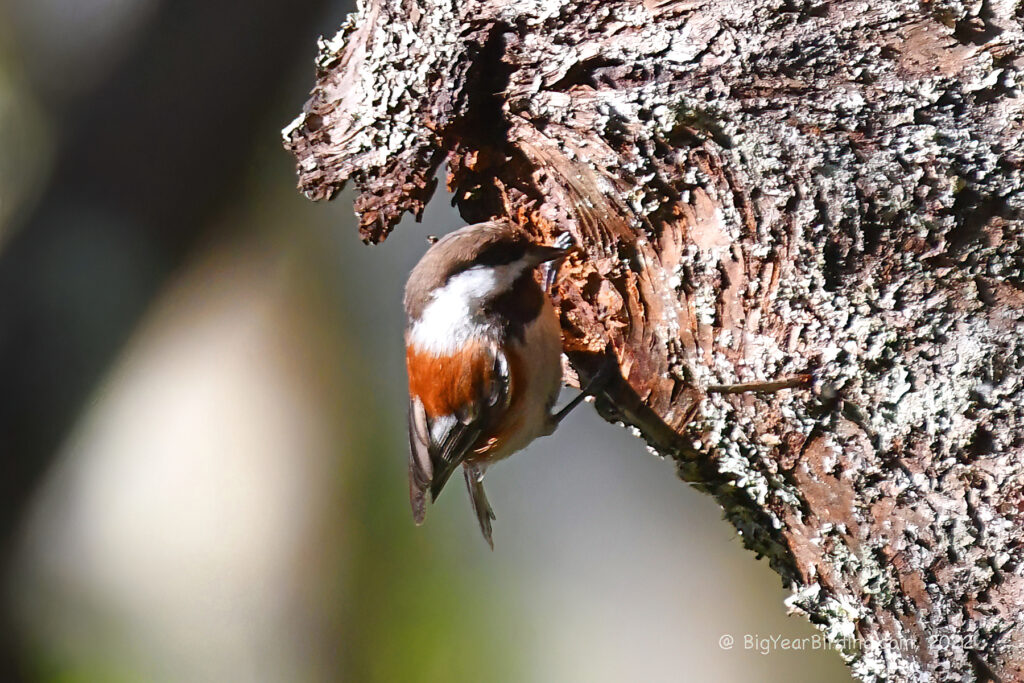
The Chestnut-backed Chickadee (Poecile rufescens) is a small, non-migratory bird that is found in the Pacific Northwest region of North America. This species measures approximately 4.5 inches in length and weighs around 0.3 ounces. The Chestnut-backed Chickadee is easily distinguished from other chickadee species by its rich chestnut-colored back, gray wings, and black cap and bib. The white cheek patches and distinctive black stripe through the eye also help to identify this bird.
 Unlike many other chickadee species, the Chestnut-backed Chickadee does not migrate. Instead, it is a year-round resident of its range, which stretches from southeastern Alaska to northern California. This bird can be found in a variety of habitats, including coniferous forests, mixed woodlands, and even urban parks and gardens. It is typically seen flitting through trees and bushes, often in small flocks with other chickadee species.
Unlike many other chickadee species, the Chestnut-backed Chickadee does not migrate. Instead, it is a year-round resident of its range, which stretches from southeastern Alaska to northern California. This bird can be found in a variety of habitats, including coniferous forests, mixed woodlands, and even urban parks and gardens. It is typically seen flitting through trees and bushes, often in small flocks with other chickadee species.
The Chestnut-backed Chickadee is a lively and active bird, often seen foraging for insects and spiders among the foliage. It has a distinctive call, which is a high-pitched, nasal “cheeseburger” or “hey-sweetie”. This bird also has a varied diet, which includes seeds, berries, and small fruits, as well as insects and other invertebrates.
Breeding season for the Chestnut-backed Chickadee typically occurs between April and July. This bird usually nests in tree cavities or birdhouses, using moss, fur, and feathers to line its nest. Females lay between 5 and 10 eggs, which hatch after approximately 12 days. Both parents share the duties of incubating the eggs and caring for the young. After fledging, the chicks remain with their parents for several weeks before becoming independent.

In conclusion, the Chestnut-backed Chickadee is a charming and distinctive bird that is found in the Pacific Northwest region of North America. This non-migratory species is easily identified by its chestnut-colored back, black cap and bib, and distinctive call. The Chestnut-backed Chickadee is a year-round resident of its range and can be found in a variety of habitats. It is an active and lively bird, often seen foraging for insects and spiders among the foliage. This bird is also known for its varied diet and interesting breeding habits, making it a fascinating subject for birdwatchers and nature enthusiasts alike.

